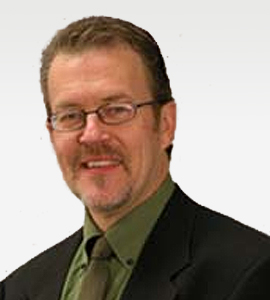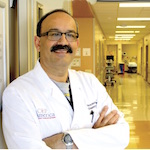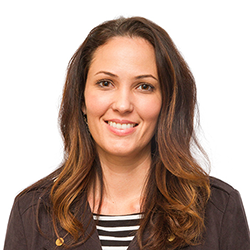In a previous post, we discussed Vituity's new collaborative learning initiatives ("collaboratives," for short). Today on Perspectives,
we'd like to highlight the experience of the teams at Inland Valley Medical Center and Rancho Springs Medical Center, who are participating in the patient experience collaborative.
Ripe for Change
The Southwest Healthcare System is a two-hospital system in southern California's Inland Empire. The Rancho Springs and Inland Valley campuses are located just five miles apart. To provide a consistent experience for patients, our emergency departments (EDs)
function as one department led by an integrated team of nursing and medical directors.
Together, our EDs see about 80,000 patients per year, with emergency visits generating about 60 percent of hospital admissions. As elsewhere in the country, patients admitted through the ED tend to score our hospitals lower on satisfaction surveys, making patient experience a priority for us.
ED leaders at Inland and Rancho have worked for years to boost patient satisfaction. Prior to the collaborative, we launched several initiatives, including patient callbacks, a process to address complaints, and inpatient rounding by ED clinical leaders. We hoped that if we could achieve culture change in the ED, it would spark improvement throughout our system.
In the past, our ED teams found it very difficult to get traction with their initiatives due to frequent turnover in both nursing leadership and hospital administration. Fortunately, we finally have strong hospital and nursing leadership at both campuses who have forged great working relationships.
With our integrated team in place, and our basic operations going strong, we were in an excellent position to focus on improving patient satisfaction. We hoped Vituity's patient experience collaborative would help us consolidate our existing efforts and move forward in an organized way.
Ready for Action
Along with teams from seven other hospitals around the country, Inland and Rancho ED leaders attended a two-day kick-off event held by Vituity. The kick-off provided an opportunity for our patient experience champions, including medical directors, assistant medical directors, nursing directors and other nurse leaders a chance to hear and learn from colleagues about what is working well at their hospitals. During the event, we had the opportunity to develop an implementation plan and participate in breakout sessions with subject matter experts on a variety of topics related to the patient experience.
We brought that knowledge back home and organized a one-day retreat to enlist Inland and Rancho champions and ambassadors to bring the effort to the physicians, nurses and other staff in our EDs. Attendees ranged from frontline providers to C-suite executives, who spent the day learning about our
compelling vision for the patient experience. Through inspirational videos on the patient experience and team building activities, we strived to get beyond patient satisfaction as a buzzword and truly create empathy for the patient and family.
Implementing Our Plan
Once we shared our vision and plan for the patient experience collaborative with the rest of the ED teams and established our nurse, provider and overall ED performance goals, we were ready for implementation. We began at the end of April with the following solutions for improving patient satisfaction:
- Team huddles: These five minute meetings at the start of each 12-hour shift enable providers and nurses to stay informed, review work and align themselves with the goals of the day.
- Provider care cards: These cards are handed to each patient and include the name of the provider, nurse, lab tests and procedures ordered, estimated wait times for results and a place to write down questions.
- Team Re-Eval (Team RE): To streamline the discharge process, our nurses and providers perform discharge together at the patient’s bedside to provide education, review discharge instructions and answer any questions.
- Patient callbacks: We had already been doing callbacks, where we check back with patients after discharge to make sure their recovery is on track. Our ED leaders saw this as a cornerstone of any successful patient experience initiative and wanted to take our callback program to the next level. To that end, we formalized the process for identifying discharged patients for callback and established call number goals and compliance goals.
- Flow scribe: We appointed one scribe to facilitate the flow of patients by collating ancillary studies, keeping the providers on target for Team RE, and helping the Rapid Medical Exam nurse coordinate flow in the front end of the ED. While this requires some education and empowerment of the scribe, the process is helping to streamline care and boost throughput in the ED.
Celebrating Early Successes
While it’s difficult to make direct connections to improved patient satisfaction at such an early stage, we have already seen many significant victories related to the patient experience collaborative. In just a few months, team engagement has been impressive. The ED teams have quickly adopted a process that is reasonably challenging and requires widespread acceptance by a diverse team of professionals. Our staff truly understands the importance of what we are doing and why we’re doing it.
We’ve also received very positive feedback from patients during callbacks. Not only do these calls allow us to intervene quickly when there is a problem, patients appreciate the follow-up, further reinforcing their positive impressions of their care. With a current focus on reaching 90 percent compliance with identified callback goals, our eventual hope is to call 100 percent of patients discharged from our EDs.
While we have seen some early bumps in patient satisfaction scores, we know that patient satisfaction tends to rise and fall. We should have more solid data in a few months from which to draw more robust conclusions. In the meantime, we are focused on ingraining these changes into our departmental culture, which takes time.
It has been rewarding to see our ED teams rally behind the patient experience process, leading to closer teamwork between medicine and nursing. In just a few months, we have made important strides toward hardwiring a culture of treating patients and one another with kindness and compassion, and it hasn’t gone unnoticed. Our colleagues across the hospital see what we’re doing and understand the significance of improving the patient experience. We look forward to seeing the impact on patient satisfaction in the coming months as we continue our work.

























